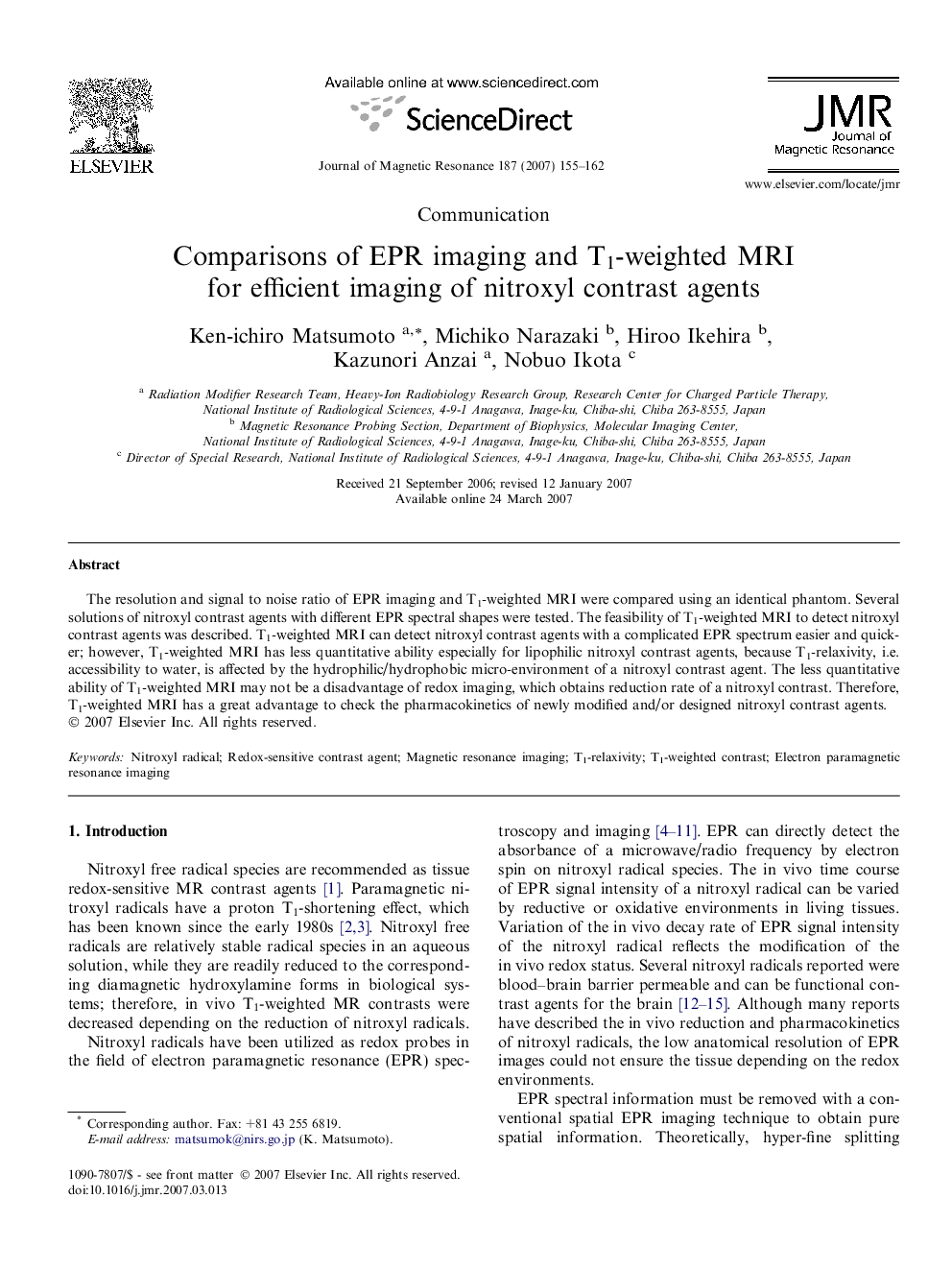| Article ID | Journal | Published Year | Pages | File Type |
|---|---|---|---|---|
| 5407367 | Journal of Magnetic Resonance | 2007 | 8 Pages |
Abstract
The resolution and signal to noise ratio of EPR imaging and T1-weighted MRI were compared using an identical phantom. Several solutions of nitroxyl contrast agents with different EPR spectral shapes were tested. The feasibility of T1-weighted MRI to detect nitroxyl contrast agents was described. T1-weighted MRI can detect nitroxyl contrast agents with a complicated EPR spectrum easier and quicker; however, T1-weighted MRI has less quantitative ability especially for lipophilic nitroxyl contrast agents, because T1-relaxivity, i.e. accessibility to water, is affected by the hydrophilic/hydrophobic micro-environment of a nitroxyl contrast agent. The less quantitative ability of T1-weighted MRI may not be a disadvantage of redox imaging, which obtains reduction rate of a nitroxyl contrast. Therefore, T1-weighted MRI has a great advantage to check the pharmacokinetics of newly modified and/or designed nitroxyl contrast agents.
Related Topics
Physical Sciences and Engineering
Chemistry
Physical and Theoretical Chemistry
Authors
Ken-ichiro Matsumoto, Michiko Narazaki, Hiroo Ikehira, Kazunori Anzai, Nobuo Ikota,
